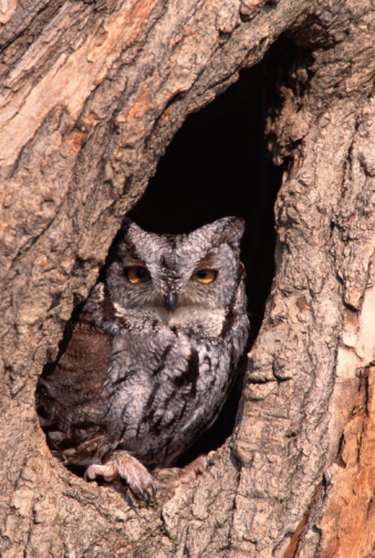Things You'll Need
Window screen
Ready-mixed plaster
Thumbtacks
paintbrush
bark-colored paint (optional)

A large cavity in a tree can be an eyesore. If the damage is severe enough, these holes can even pose a safety hazard because of the risk of the tree falling on people or structures. Some people have tried repairing tree cavities by filling them with cement or other fillers, but this can cause more harm than good. Sometimes, it's best to leave the tree alone, but if you decide to cover the hole, there is a way to fix the cavity without causing further damage to the tree.
Step 1
Have the tree inspected by a professional for stability before attempting to repair it. Even if the cavity doesn't look dangerous, there could be decay deep inside the tree that is compromising its stability. A very large hole in a tree, especially at the base, can weaken it to the point that it could fall over.
Video of the Day
Step 2
Clean out any loose material inside the cavity. Do not scrape the inside of the tree or remove anything other than loose materials, because this could spread the decay or cause more injury. If there is water inside the cavity, siphon it out with a tube or hose rather than boring holes to drain it.
Step 3
Cut a piece of window screen about 2 inches larger than the hole. Secure it over the cavity with thumbtacks. Start at the top, and pull the the screen taut as you work your way down. Bend the screen to match the curve of the tree.
Step 4
Apply plaster in a thin layer over the screen using a paintbrush. Allow the plaster to dry completely, which may take several hours. Refer to the plaster packaging for exact drying time.
Step 5
Wash the paintbrush thoroughly, then use it to paint over the plaster with a color that closely matches the surrounding bark. This step is optional, but it will improve the appearance of the tree until the bark grows around the screen to cover it, which will most likely take a year or more.
Video of the Day